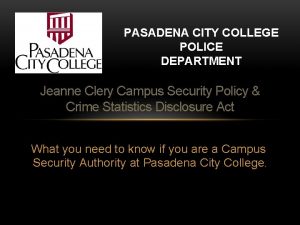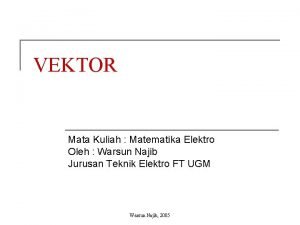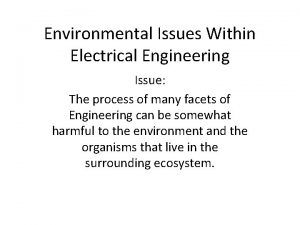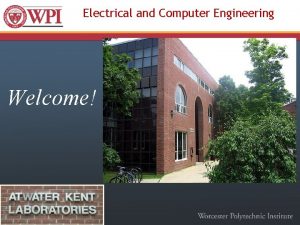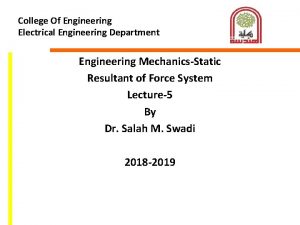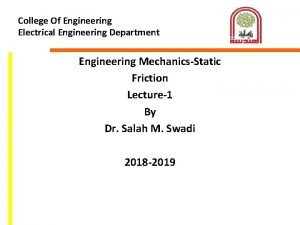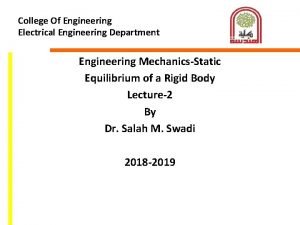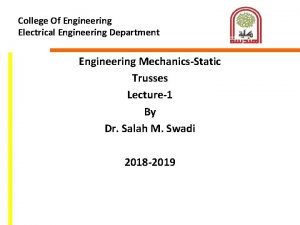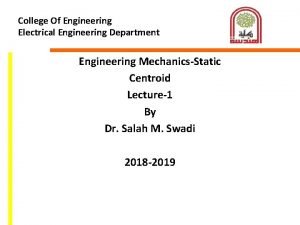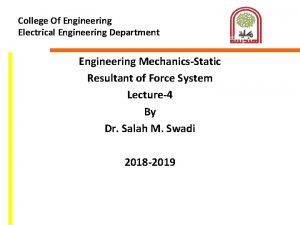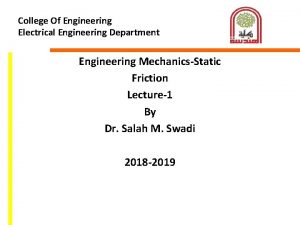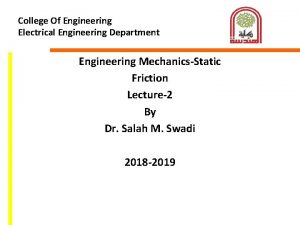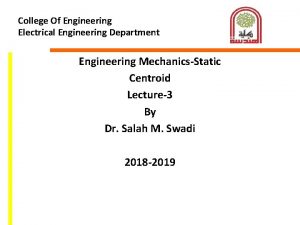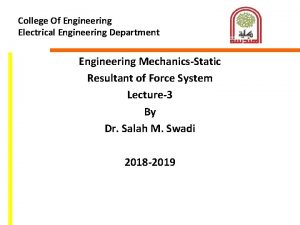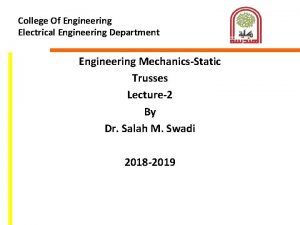College Of Engineering Electrical Engineering Department Engineering MechanicsStatic












- Slides: 12

College Of Engineering Electrical Engineering Department Engineering Mechanics-Static Centroid Lecture-2 By Dr. Salah M. Swadi 2018 -2019

9. 2 Composite Bodies • • • Consists of a series of connected “simpler” shaped bodies, which may be rectangular, triangular or semicircular A body can be sectioned or divided into its composite parts Accounting for finite number of weights

9. 2 Composite Bodies Procedure for Analysis Composite Parts • Divide the body or object into a finite number of composite parts that have simpler shapes • Treat the hole in composite as an additional composite part having negative weight or size Moment Arms • Establish the coordinate axes and determine the coordinates of the center of gravity or centroid of each part

9. 2 Composite Bodies Procedure for Analysis Summations • Determine the coordinates of the center of gravity by applying the center of gravity equations • If an object is symmetrical about an axis, the centroid of the objects lies on the axis

Example 9. 10 Locate the centroid of the plate area.

Solution Composite Parts Plate divided into 3 segments. Area of small rectangle considered “negative”.

Solution Moment Arm Location of the centroid for each piece is determined and indicated in the diagram. Summations

9. 3 Theorems of Pappus and Guldinus • • A surface area of revolution is generated by revolving a plane curve about a non-intersecting fixed axis in the plane of the curve A volume of revolution is generated by revolving a plane area bout a nonintersecting fixed axis in the plane of area

9. 3 Theorems of Pappus and Guldinus • The theorems of Pappus and Guldinus are used to find the surfaces area and volume of any object of revolution provided the generating curves and areas do not cross the axis they are rotated Surface Area • Area of a surface of revolution = product of length of the curve and distance traveled by the centroid in generating the surface area

9. 3 Theorems of Pappus and Guldinus Volume • Volume of a body of revolution = product of generating area and distance traveled by the centroid in generating the volume

Example 9. 12 Show that the surface area of a sphere is A = 4πR 2 and its volume V = 4/3 πR 3. Solution Surface Area Generated by rotating semi-arc about the x axis For centroid, For surface area,

Solution Volume Generated by rotating semicircular area about the x axis For centroid, For volume,
 Electrical engineering department
Electrical engineering department Tum department of electrical and computer engineering
Tum department of electrical and computer engineering Ucla systems engineering
Ucla systems engineering Pasadena city college police department
Pasadena city college police department Pengurangan vektor
Pengurangan vektor George washington university electrical engineering
George washington university electrical engineering Tel aviv university electrical engineering
Tel aviv university electrical engineering Northwestern university computer engineering
Northwestern university computer engineering Klipsch school of electrical and computer engineering
Klipsch school of electrical and computer engineering Umd ee
Umd ee Open wiring design
Open wiring design Electrical engineering environmental issues
Electrical engineering environmental issues Wpi ece faculty
Wpi ece faculty



